It seems a Swiss team from the École Polytechnique de Lausanne (EPFL) have collaborated with American companies Twist Bioscience and Microsoft, as well as, the University of Washington (state) to preserve two iconic jazz pieces on DNA (deoxyribonucleic acid) according to a Sept. 29, 2017 news item on phys.org,,
Thanks to an innovative technology for encoding data in DNA strands, two items of world heritage – songs recorded at the Montreux Jazz Festival [held in Switzerland] and digitized by EPFL – have been safeguarded for eternity. This marks the first time that cultural artifacts granted UNESCO heritage status have been saved in such a manner, ensuring they are preserved for thousands of years. The method was developed by US company Twist Bioscience and is being unveiled today in a demonstrator created at the EPFL+ECAL Lab.
“Tutu” by Miles Davis and “Smoke on the Water” by Deep Purple have already made their mark on music history. Now they have entered the annals of science, for eternity. Recordings of these two legendary songs were digitized by the Ecole Polytechnique Fédérale de Lausanne (EPFL) as part of the Montreux Jazz Digital Project, and they are the first to be stored in the form of a DNA sequence that can be subsequently decoded and listened to without any reduction in quality.
A Sept. 29, 2017 EPFL press release by Emmanuel Barraud, which originated the news item, provides more details,
This feat was achieved by US company Twist Bioscience working in association with Microsoft Research and the University of Washington. The pioneering technology is actually based on a mechanism that has been at work on Earth for billions of years: storing information in the form of DNA strands. This fundamental process is what has allowed all living species, plants and animals alike, to live on from generation to generation.
The entire world wide web in a shoe box
All electronic data storage involves encoding data in binary format – a series of zeros and ones – and then recording it on a physical medium. DNA works in a similar way, but is composed of long strands of series of four nucleotides (A, T, C and G) that make up a “code.” While the basic principle may be the same, the two methods differ greatly in terms of efficiency: if all the information currently on the internet was stored in the form of DNA, it would fit in a shoe box!
Recent advances in biotechnology now make it possible for humans to do what Mother Nature has always done. Today’s scientists can create artificial DNA strands, “record” any kind of genetic code on them and then analyze them using a sequencer to reconstruct the original data. What’s more, DNA is extraordinarily stable, as evidenced by prehistoric fragments that have been preserved in amber. Artificial strands created by scientists and carefully encapsulated should likewise last for millennia.
To help demonstrate the feasibility of this new method, EPFL’s Metamedia Center provided recordings of two famous songs played at the Montreux Jazz Festival: “Tutu” by Miles Davis, and “Smoke on the Water” by Deep Purple. Twist Bioscience and its research partners encoded the recordings, transformed them into DNA strands and then sequenced and decoded them and played them again – without any reduction in quality.
The amount of artificial DNA strands needed to record the two songs is invisible to the naked eye, and the amount needed to record all 50 years of the Festival’s archives, which have been included in UNESCO’s [United Nations Educational, Scientific and Cultural Organization] Memory of the World Register, would be equal in size to a grain of sand. “Our partnership with EPFL in digitizing our archives aims not only at their positive exploration, but also at their preservation for the next generations,” says Thierry Amsallem, president of the Claude Nobs Foundation. “By taking part in this pioneering experiment which writes the songs into DNA strands, we can be certain that they will be saved on a medium that will never become obsolete!”
A new concept of time
At EPFL’s first-ever ArtTech forum, attendees got to hear the two songs played after being stored in DNA, using a demonstrator developed at the EPFL+ECAL Lab. The system shows that being able to store data for thousands of years is a revolutionary breakthrough that can completely change our relationship with data, memory and time. “For us, it means looking into radically new ways of interacting with cultural heritage that can potentially cut across civilizations,” says Nicolas Henchoz, head of the EPFL+ECAL Lab.
Quincy Jones, a longstanding Festival supporter, is particularly enthusiastic about this technological breakthrough: “With advancements in nanotechnology, I believe we can expect to see people living prolonged lives, and with that, we can also expect to see more developments in the enhancement of how we live. For me, life is all about learning where you came from in order to get where you want to go, but in order to do so, you need access to history! And with the unreliability of how archives are often stored, I sometimes worry that our future generations will be left without such access… So, it absolutely makes my soul smile to know that EPFL, Twist Bioscience and their partners are coming together to preserve the beauty and history of the Montreux Jazz Festival for our future generations, on DNA! I’ve been a part of this festival for decades and it truly is a magnificent representation of what happens when different cultures unite for the sake of music. Absolute magic. And I’m proud to know that the memory of this special place will never be lost.
A Sept. 29, 2017 Twist Bioscience news release is repetitive in some ways but interesting nonetheless,
Twist Bioscience, a company accelerating science and innovation through rapid, high-quality DNA synthesis, today announced that, working with Microsoft and University of Washington researchers, they have successfully stored archival-quality audio recordings of two important music performances from the archives of the world-renowned Montreux Jazz Festival.These selections are encoded and stored in nature’s preferred storage medium, DNA, for the first time. These tiny specks of DNA will preserve a part of UNESCO’s Memory of the World Archive, where valuable cultural heritage collections are recorded. This is the first time DNA has been used as a long-term archival-quality storage medium.Quincy Jones, world-renowned Entertainment Executive, Music Composer and Arranger, Musician and Music Producer said, “With advancements in nanotechnology, I believe we can expect to see people living prolonged lives, and with that, we can also expect to see more developments in the enhancement of how we live. For me, life is all about learning where you came from in order to get where you want to go, but in order to do so, you need access to history! And with the unreliability of how archives are often stored, I sometimes worry that our future generations will be left without such access…So, it absolutely makes my soul smile to know that EPFL, Twist Bioscience and others are coming together to preserve the beauty and history of the Montreux Jazz Festival for our future generations, on DNA!…I’ve been a part of this festival for decades and it truly is a magnificent representation of what happens when different cultures unite for the sake of music. Absolute magic. And I’m proud to know that the memory of this special place will never be lost.”“Our partnership with EPFL in digitizing our archives aims not only at their positive exploration, but also at their preservation for the next generations,” says Thierry Amsallem, president of the Claude Nobs Foundation. “By taking part in this pioneering experiment which writes the songs into DNA strands, we can be certain that they will be saved on a medium that will never become obsolete!”The Montreux Jazz Digital Project is a collaboration between the Claude Nobs Foundation, curator of the Montreux Jazz Festival audio-visual collection and the École Polytechnique Fédérale de Lausanne (EPFL) to digitize, enrich, store, show, and preserve this notable legacy created by Claude Nobs, the Festival’s founder.In this proof-of-principle project, two quintessential music performances from the Montreux Jazz Festival – Smoke on the Water, performed by Deep Purple and Tutu, performed by Miles Davis – have been encoded onto DNA and read back with 100 percent accuracy. After being decoded, the songs were played on September 29th [2017] at the ArtTech Forum (see below) in Lausanne, Switzerland. Smoke on the Water was selected as a tribute to Claude Nobs, the Montreux Jazz Festival’s founder. The song memorializes a fire and Funky Claude’s rescue efforts at the Casino Barrière de Montreux during a Frank Zappa concert promoted by Claude Nobs. Miles Davis’ Tutu was selected for the role he played in music history and the Montreux Jazz Festival’s success. Miles Davis died in 1991.“We archived two magical musical pieces on DNA of this historic collection, equating to 140MB of stored data in DNA,” said Karin Strauss, Ph.D., a Senior Researcher at Microsoft, and one of the project’s leaders. “The amount of DNA used to store these songs is much smaller than one grain of sand. Amazingly, storing the entire six petabyte Montreux Jazz Festival’s collection would result in DNA smaller than one grain of rice.”Luis Ceze, Ph.D., a professor in the Paul G. Allen School of Computer Science & Engineering at the University of Washington, said, “DNA, nature’s preferred information storage medium, is an ideal fit for digital archives because of its durability, density and eternal relevance. Storing items from the Montreux Jazz Festival is a perfect way to show how fast DNA digital data storage is becoming real.”Nature’s Preferred Storage MediumNature selected DNA as its hard drive billions of years ago to encode all the genetic instructions necessary for life. These instructions include all the information necessary for survival. DNA molecules encode information with sequences of discrete units. In computers, these discrete units are the 0s and 1s of “binary code,” whereas in DNA molecules, the units are the four distinct nucleotide bases: adenine (A), cytosine (C), guanine (G) and thymine (T).“DNA is a remarkably efficient molecule that can remain stable for millennia,” said Bill Peck, Ph.D., chief technology officer of Twist Bioscience. “This is a very exciting project: we are now in an age where we can use the remarkable efficiencies of nature to archive master copies of our cultural heritage in DNA. As we develop the economies of this process new performances can be added any time. Unlike current storage technologies, nature’s media will not change and will remain readable through time. There will be no new technology to replace DNA, nature has already optimized the format.”DNA: Far More Efficient Than a ComputerEach cell within the human body contains approximately three billion base pairs of DNA. With 75 trillion cells in the human body, this equates to the storage of 150 zettabytes (1021) of information within each body. By comparison, the largest data centers can be hundreds of thousands to even millions of square feet to hold a comparable amount of stored data.The Elegance of DNA as a Storage MediumLike music, which can be widely varied with a finite number of notes, DNA encodes individuality with only four different letters in varied combinations. When using DNA as a storage medium, there are several advantages in addition to the universality of the format and incredible storage density. DNA can be stable for thousands of years when stored in a cool dry place and is easy to copy using polymerase chain reaction to create back-up copies of archived material. In addition, because of PCR, small data sets can be targeted and recovered quickly from a large dataset without needing to read the entire file.How to Store Digital Data in DNATo encode the music performances into archival storage copies in DNA, Twist Bioscience worked with Microsoft and University of Washington researchers to complete four steps: Coding, synthesis/storage, retrieval and decoding. First, the digital files were converted from the binary code using 0s and 1s into sequences of A, C, T and G. For purposes of the example, 00 represents A, 10 represents C, 01 represents G and 11 represents T. Twist Bioscience then synthesizes the DNA in short segments in the sequence order provided. The short DNA segments each contain about 12 bytes of data as well as a sequence number to indicate their place within the overall sequence. This is the process of storage. And finally, to ensure that the file is stored accurately, the sequence is read back to ensure 100 percent accuracy, and then decoded from A, C, T or G into a two-digit binary representation.Importantly, to encapsulate and preserve encoded DNA, the collaborators are working with Professor Dr. Robert Grass of ETH Zurich. Grass has developed an innovative technology inspired by preservation of DNA within prehistoric fossils. With this technology, digital data encoded in DNA remains preserved for millennia.About UNESCO’s Memory of the World RegisterUNESCO established the Memory of the World Register in 1992 in response to a growing awareness of the perilous state of preservation of, and access to, documentary heritage in various parts of the world. Through its National Commissions, UNESCO prepared a list of endangered library and archive holdings and a world list of national cinematic heritage.A range of pilot projects employing contemporary technology to reproduce original documentary heritage on other media began. These included, for example, a CD-ROM of the 13th Century Radzivill Chronicle, tracing the origins of the peoples of Europe, and Memoria de Iberoamerica, a joint newspaper microfilming project involving seven Latin American countries. These projects enhanced access to this documentary heritage and contributed to its preservation.“We are incredibly proud to be a part of this momentous event, with the first archived songs placed into the UNESCO Memory of the World Register,” said Emily Leproust, Ph.D., CEO of Twist Bioscience.About ArtTechThe ArtTech Foundation, created by renowned scientists and dignitaries from Crans-Montana, Switzerland, wishes to stimulate reflection and support pioneering and innovative projects beyond the known boundaries of culture and science.Benefitting from the establishment of a favorable environment for the creation of technology companies, the Foundation aims to position itself as key promoter of ideas and innovative endeavors within a landscape of “Culture and Science” that is still being shaped.Several initiatives, including our annual global platform launched in the spring of 2017, are helping to create a community that brings together researchers, celebrities in the world of culture and the arts, as well as investors and entrepreneurs from Switzerland and across the globe.About EPFLEPFL, one of the two Swiss Federal Institutes of Technology, based in Lausanne, is Europe’s most cosmopolitan technical university with students, professors and staff from over 120 nations. A dynamic environment, open to Switzerland and the world, EPFL is centered on its three missions: teaching, research and technology transfer. EPFL works together with an extensive network of partners including other universities and institutes of technology, developing and emerging countries, secondary schools and colleges, industry and economy, political circles and the general public, to bring about real impact for society.About Twist BioscienceAt Twist Bioscience, our expertise is accelerating science and innovation by leveraging the power of scale. We have developed a proprietary semiconductor-based synthetic DNA manufacturing process featuring a high throughput silicon platform capable of producing synthetic biology tools, including genes, oligonucleotide pools and variant libraries. By synthesizing DNA on silicon instead of on traditional 96-well plastic plates, our platform overcomes the current inefficiencies of synthetic DNA production, and enables cost-effective, rapid, high-quality and high throughput synthetic gene production, which in turn, expedites the design, build and test cycle to enable personalized medicines, pharmaceuticals, sustainable chemical production, improved agriculture production, diagnostics and biodetection. We are also developing new technologies to address large scale data storage. For more information, please visit www.twistbioscience.com. Twist Bioscience is on Twitter. Sign up to follow our Twitter feed @TwistBioscience at https://twitter.com/TwistBioscience.
If you hadn’t read the EPFL press release first, it might have taken a minute to figure out why EPFL is being mentioned in the Twist Bioscience news release. Presumably someone was rushing to make a deadline. Ah well, I’ve seen and written worse.
I haven’t been able to find any video or audio recordings of the DNA-preserved performances but there is an informational video (originally published July 7, 2016) from Microsoft and the University of Washington describing the DNA-based technology,
I also found this description of listening to the DNA-preserved music in an Oct. 6, 2017 blog posting for the Canadian Broadcasting Corporation’s (CBC) Day 6 radio programme,
To listen to them, one must first suspend the DNA holding the songs in a solution. Next, one can use a DNA sequencer to read the letters of the bases forming the molecules. Then, algorithms can determine the digital code those letters form. From that code, comes the music.
It’s complicated but Ceze says his team performed this process without error.
You can find out more about UNESCO’s Memory of the World and its register here , more about the EPFL+ECAL Lab here, and more about Twist Bioscience here.
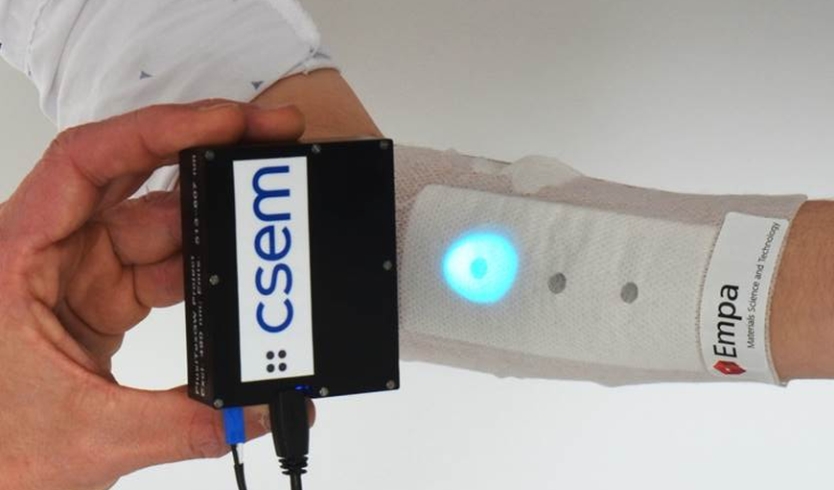
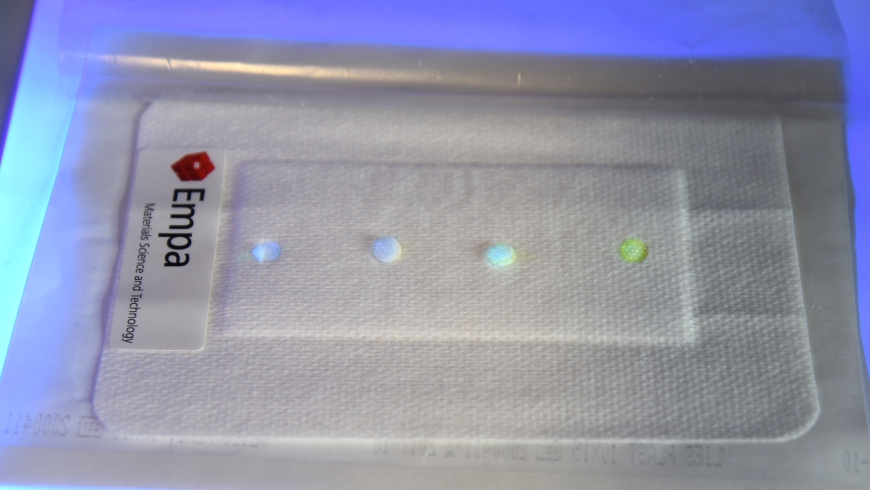
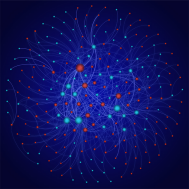
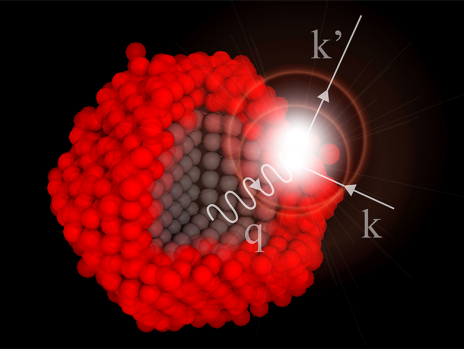
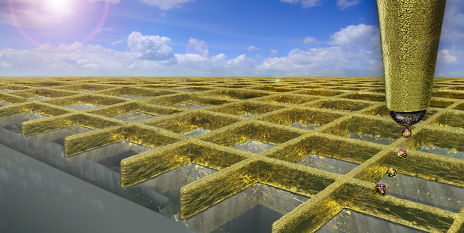
![[downloaded from https://github.com/jhermann/Stack-O-Waffles] Credit: jherman](http://www.frogheart.ca/wp-content/uploads/2016/01/Waffles.png)
